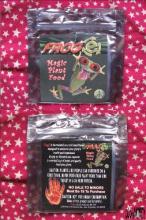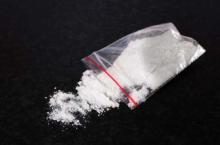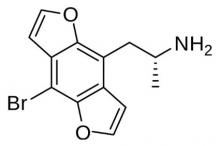Bath salts, spice, and nutmeg are more than common household items; they are also designer drugs that can send people to the emergency department.
While emergency department visits resulting from use of older drugs of abuse such as LSD and cocaine have gone up 29%-48% over the past decade, ED visits resulting from the use of nontraditional, emerging, and Web-based (NEW) drugs have increased by estimates ranging from 187%-5,846%, Dr. Mark B. Mycyk said at the annual meeting of the American College of Emergency Physicians.
The Internet has been a "huge source of information and a powerful influence on this rapidly evolving and changing epidemic," said Dr. Mycyk of Cook County Hospital in Chicago. Designer drugs are easily available from websites such as Silk Road, "the Amazon.com of some of these NEW drugs," he said, and anyone with access to a computer "can pretty much get almost anything delivered to their homes or dorm rooms or a post office box." According to one study, websites touting recreational drugs were a factor in 27% of new drug use in college-age students (Pediatrics 2002;109:e96).
"Cases we see in the ED are extreme ... cases where people end up with complications," Dr. Mycyk said. Emergency physicians may see patients who have used the following NEW drugs:
• Bath salts (methylenedioxypyrovalerone, MDPV). "Brand names" include Ivory Wave, Bliss, and White Lightning; also called Plant Food. Popularized in Australia, these are not the kind of bath salts you would buy at a home goods store, which cause only severe rhinitis if snorted. The type sold online and in "head shops" is a stimulant and hallucinogen that causes cardiovascular and psychiatric adverse effects. "Self-harm has become a common complication. ... People get so psychotic, they are actually getting aggressive and harming others," Dr. Mycyk said. MDPV also has "lots of other profound effects on human neurotransmitters that we still do not understand," and the drug is "so addictive that users say it provokes an almost-uncontrollable urge for another hit." The chemicals used to make "bath salts" were classified as schedule 1 substances in late October by the Drug Enforcement Agency.
• Spice. Also known as K2. This synthetic cannabinoid, developed for animal research, "has resulted in a number of ED visits, and some of these visits can be pretty prolonged, and we’ve seen some unanticipated complications," Dr. Mycyk said. K2 is "much more potent and powerful than natural marijuana, so the effects that we see are much more extreme." Symptoms include agitation, cardiovascular effects, and inappropriate affect (Clin. Toxicol. [Phila.] 2011;49:431-3). Several varieties are now illegal in the United States, but chemists can create "newer synthetic analogs, which look different from Spice and K2, and that way, they evade the legal authorities," he said.
• Meow-Meow (mephedrone, 4-methylmethcathinone). Other street names include Drone, Bubble, and MCAT. This synthetic cathinone, derived from an African shrub, is a stimulant and sympathomimetic agent. Its effects and structure are similar to those of ephedra and amphetamine. Symptoms of Meow-Meow use include seizures, agitation, tachycardia, hypertension, and hyperthermia (Toxicol. Lett. 2011;201:191-5).
• Bromo-DragonFLY (bromo-benzodifuranyl-isopropylamine). Adverse effects of this designer drug include hallucinations, seizures, vomiting, and intense vasoconstriction with resulting ischemia in fingers and toes. The drug has "hallucinogenic, Ecstasy-like properties" and is a serotoninergic receptor agonist. The name derives from the resemblance its chemical structure has to a dragonfly.
• Nutmeg. At doses as high as 50 g, the common spice nutmeg has hallucinogenic properties. "When we see nutmeg users in the ED, we’re seeing a small proportion who took an extremely large dose or have an unanticipated complication from it," Dr. Mycyk said. In one case series of 119 patients, the most common symptoms were tachycardia, palpitations, and agitation. The researchers found that "clinical effects from ingestion can be significant and can require medical intervention" (Clin. Toxicol. [Phila.] 2011;49:177-80).
• Salvia. Street names of the salvia divinorum plant include Diviner’s Sage, Shepherdess, and Sally D. Related to mint, salvia has hallucinogenic and psychotomimetic properties. Symptoms include agitation and neurologic, cardiovascular, and gastrointestinal effects. The herb can be made into a tea; fresh leaves can be chewed; or leaves can be dried and then smoked, snorted, or injected. The drug has not been well studied, but one group of researchers analyzed YouTube videos of salvia users to study its effects (Drug Alcohol Depend. 2010;108:138-40).





